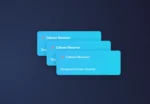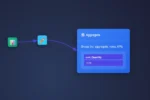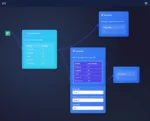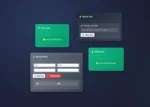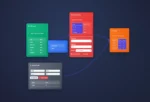In today’s hyper-competitive, digitally transformed landscape, operational latency is the new technical debt—and every second (or millisecond) delayed in surfacing actionable signals impacts revenue, reliability, and user experience. At Dev3lop LLC, we architect and deliver data solutions that turn laggy, unreliable notifications into cutting-edge, sub-second alerting pipelines. If your operations, product, or analytics teams are still waiting on minutes-old metrics or chasing stale outages, it’s time to reimagine your alerting infrastructure. In this article, we’ll outline the architecture, challenges, and strategic advantages of real-time alerting systems that meet and exceed sub-second response times—so you can see issues as they happen, not after the impact is felt.
Engineering for Instantaneous Awareness
Traditional alerting systems often process streams in batches, introducing delays that can compromise operational agility. Sub-second alerting pipelines, by contrast, are engineered for immediacy—ingesting, processing, and routing signals to humans (or automated remediation) with astonishing speed. This means rethinking everything from data ingestion through event streaming (such as Apache Kafka or AWS Kinesis), employing highly-tuned stream processing frameworks, and sharding downstream workflows for low latency.
Implementing such systems requires a deep understanding of data engineering principles—an expertise that Dev3lop’s data engineering consulting services bring to clients seeking transformative operational visibility. From impact analysis automation for upstream schema changes to cost-optimized cloud scaling, we ensure every facet of the pipeline supports speed and reliability. Moreover, leveraging techniques such as approximate algorithms for big metrics enables rapid detection of anomalies without the full cost of exhaustive calculation. The end result: an alerting fabric that puts operations ahead of potential disruptions, rather than catching up after the fact.
Architectural Innovations and Visualization Integration
The technical heart of sub-second alerting lies in its architecture. Building this capability involves streaming ETL, scalable cloud messaging, and serverless event handling to minimize bottlenecks. Next-gen pipelines take advantage of parallel processing and intelligent buffering to prevent data jams and ensure every signal is processed without delay. Additionally, adopting distributed processing patterns and elastic cloud resources allows your data flows to match emerging load in real time—essential for reliability and cost efficiency, as described in our thoughts on cloud data service cost optimization strategies.
Of course, surfacing rapid alerts is only half the battle; empowering your analysts and operators to act is equally critical. This is where modern visualization tools, such as Tableau or custom dashboards, help teams monitor and drill down into signals as they happen. For inspiration on creating interactive dashboards in Tableau that connect with real-time data endpoints, see our comprehensive how-to. Specialized visualization—like ridgeline plots for rapid distribution comparison—further empowers organizations to not only react quickly, but to spot complex operational patterns that batch data would miss. By integrating these real-time visual assets, decision-makers gain tactical clarity at the moment it matters most.
Strategic Impact: From Operations to Analytics
Fast alerting pipelines don’t just turbocharge technical operations—they directly drive business results. Sub-second latency enables proactive issue mitigation, reduces downtime, and ensures regulatory compliance in sectors where timing is everything (think healthcare, logistics, or finance). It also unlocks new analytics possibilities: correlating instant operational triggers with global outcomes, facilitating A/B tests, and even mapping public sentiment shifts as they occur. See, for example, how public health visualization strategies for epidemiological data rely on real-time feeds to inform rapid response.
At Dev3lop, we extend these concepts beyond IT incident response. Real-time alerting can power dashboards for immigration data analytics and movement visualization, enable predictive maintenance, or underpin automated customer support interventions. The technology is fundamentally about information empowerment—delivering value as close to the point of data creation as possible, and allowing analytics teams to shift from reactive to strategic, thanks to always-fresh signals.
Conclusion: Future-Proof Your Signal Detection
The shift to sub-second operational alerting isn’t about trend-chasing. It’s a strategic evolution for businesses that want to stay ahead—transforming every byte of their operational exhaust into actionable, real-time insights. If you’re ready to leave sluggish, error-prone pipelines behind, or want to see how rapid alerting integrates with your broader data stack, our team of data engineering consultants is here to guide you. Harness the speed, flexibility, and intelligence of modern architectures and position your organization for a data-driven future, one signal at a time.
Thank you for your support, follow DEV3LOPCOM, LLC on LinkedIn and YouTube.










